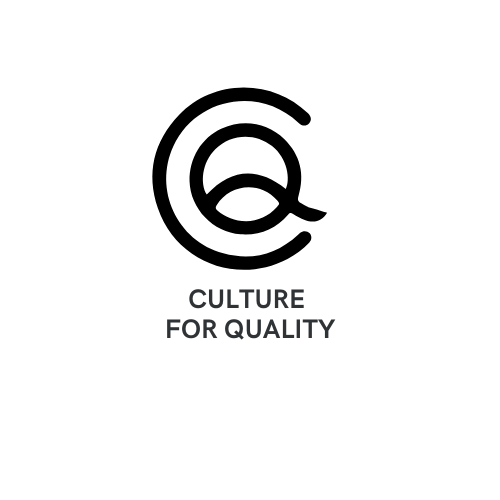Our ASQ research reveals the cultural factors that drive job satisfaction—and the critical elements that predict dissatisfaction when absent
When my associate Jenny Chu and I began analyzing data from the 2024 ASQ Salary Survey, we expected to find some interesting patterns about what makes quality professionals satisfied with their work. What we discovered was far more nuanced: job satisfaction and job dissatisfaction aren’t simply opposite ends of the same spectrum. They’re driven by fundamentally different factors.
This insight, which echoes Frederick Herzberg’s pioneering work on motivation from the 1960s, has profound implications for how organizations should approach quality culture. It’s not enough to remove sources of dissatisfaction—you must also actively cultivate the conditions for genuine satisfaction.
The Research
As part of the run-up to the 2024 Quality Progress Salary Survey, we asked quality professionals 18 questions about their organization’s culture of quality and how that influenced their job satisfaction. More than 1,200 respondents shared their experiences across factors ranging from engagement and professional development to upward voice and safety.
We then broke cultural factors into two lists: (A) those that most strongly predicted high job satisfaction when present, and (B) the ones that most strongly predicted dissatisfaction when absent. The results were striking.
What Drives Satisfaction – list A
The top factors associated with job satisfaction are what Herzberg would call “motivational factors”—elements intrinsic to the work itself that fulfill higher-order psychological needs:
Engagement topped the list, with highly engaged workplaces showing average satisfaction scores of 4.2 out of 5. While engagement might seem somewhat circular as a predictor of satisfaction, it confirms that when employees are genuinely invested in their work, satisfaction follows naturally.
W. Edwards Deming emphasized that everyone in an organization has the right to take pride in their work, and that management’s role is to remove obstacles preventing people from doing their best.
Pride in work came in second. W. Edwards Deming emphasized that everyone in an organization has the right to take pride in their work, and that management’s role is to remove obstacles preventing people from doing their best. When employees feel that management understands its responsibility to ensure people can take pride and satisfaction in their work, job satisfaction soars.
Professional development ranked third among satisfaction drivers. Organizations that demonstrate genuine commitment to developing their workforce create environments where people feel valued and see a future for themselves. This factor proved particularly interesting because it appeared on both lists—more on that shortly.
Training also emerged as crucial, with two related findings: respondents who felt well-trained for their own roles reported higher satisfaction, and they also valued working in organizations where everyone was properly trained. Work is a team sport, after all. Little satisfaction comes from being the only person who knows what they’re doing.
Inclusion in idea generation rounded out the top satisfaction drivers. When leadership actively seeks ideas for improvement from across the organization, it signals that diverse perspectives are valued and creates a culture of openness and innovation.
What Predicts Dissatisfaction
The factors most strongly associated with dissatisfaction when absent tell a different story. These aren’t simply the inverse of satisfaction drivers. Some of these are obvious:
Salary, when it isn’t up to market standard or just isn’t sufficient to cover needs, is an obvious dissatisfier.
Physical safety should be a given, and where it isn’t employees are deeply unhappy. Again, obvious.
But far less obvious is this:
Upward voice—the ability to speak openly to superiors about quality concerns—was the single strongest predictor of dissatisfaction when absent.
Upward voice—the ability to speak openly to superiors about quality concerns—was the single strongest predictor of dissatisfaction when absent. Quality professionals working in environments where they couldn’t comfortably raise issues with their immediate superiors reported average satisfaction scores of just 2.4 out of 5.
Here’s where things get interesting: upward voice sits near the bottom of the satisfaction list (18th out of 18 factors). This creates an apparent paradox.
Understanding the Paradox
The upward voice paradox resolves when we recognize that within the quality profession, the ability to speak up about quality issues isn’t a satisfier—it’s a fundamental prerequisite. It’s the equivalent of having the tools you need to do your job. When it’s missing, quality professionals can’t even begin to do their work effectively, creating profound dissatisfaction. When it’s present, it simply enables them to perform their basic functions—it doesn’t make them happy, it just removes a barrier to doing their jobs.
In other professions, upward voice might function as a motivational factor. But for quality professionals, who must by definition be able to identify and communicate about problems, its absence is intolerable. This makes it a hygiene factor in Herzberg’s framework—necessary to prevent dissatisfaction, but not sufficient to create satisfaction.
Enterprisewide focus on quality emerged as the other major dissatisfaction predictor, encompassing three related factors: management’s commitment to quality, provision of necessary tools and resources, and aiming for quality beyond regulatory requirements. When quality feels like a checkbox exercise rather than a genuine organizational commitment, quality professionals become deeply dissatisfied. As one respondent bluntly put it: “The company frankly sees quality as an inconvenience and treats quality employees that way.”
The Professional Development Exception
Professional development stands out as the one factor appearing prominently on both lists. When organizations invest in developing their people, satisfaction increases substantially. When they neglect development, dissatisfaction follows. This dual nature suggests professional development sits at the intersection of hygiene and motivational factors—it’s both a basic expectation and a powerful driver of engagement and growth.
Training: The Widespread Gap
Perhaps the most concerning finding was about training. Despite its importance to job satisfaction, training ranked dead last in prevalence among the factors we measured. Only 54% of respondents agreed their organizations provided good training to everyone, and barely more (54.3%) felt well-trained for their own positions.
This represents a massive opportunity cost. Training is something organizations can directly control and improve, yet it remains the most neglected element of quality culture among the factors we studied.
Building Better Quality Cultures
These findings offer a clear roadmap for organizations serious about attracting and retaining quality talent:
First, establish the foundations. Ensure psychological safety to promote upward voice. Demonstrate genuine, enterprise-wide commitment to quality. Provide the tools and resources people need. These hygiene factors won’t make your quality professionals happy by themselves, but their absence will make retention impossible.
Second, invest in development and training. These two represent the bridge between merely preventing dissatisfaction and actively creating satisfaction. They function as both hygiene and motivational factors.
Organizations that prioritize open communication, invest in their employees’ development, and cultivate genuine commitment to quality throughout the enterprise will create the conditions for quality professionals to thrive.
Third, cultivate motivational factors. Create opportunities for pride in work. Foster genuine engagement. Actively include people in idea generation and improvement efforts. These elements transform adequate workplaces into places where quality professionals genuinely want to build their careers.
The lesson is clear: organizations that prioritize open communication, invest in their employees’ development, and cultivate genuine commitment to quality throughout the enterprise will not only avoid dissatisfaction—they’ll create the conditions for quality professionals to thrive.
This article is based on research published in the November 2024 issue of Quality Progress. The full ASQ Salary Survey results will be available in December 2024. Read the complete published article at An Uprising.
Max Hansen is a management consultant specializing in quality culture and organizational development. Jenny Chu is an organizational development consultant and owner of Lagom Consulting. Together they have published over 20 articles on quality, culture, and leadership for ASQ.

